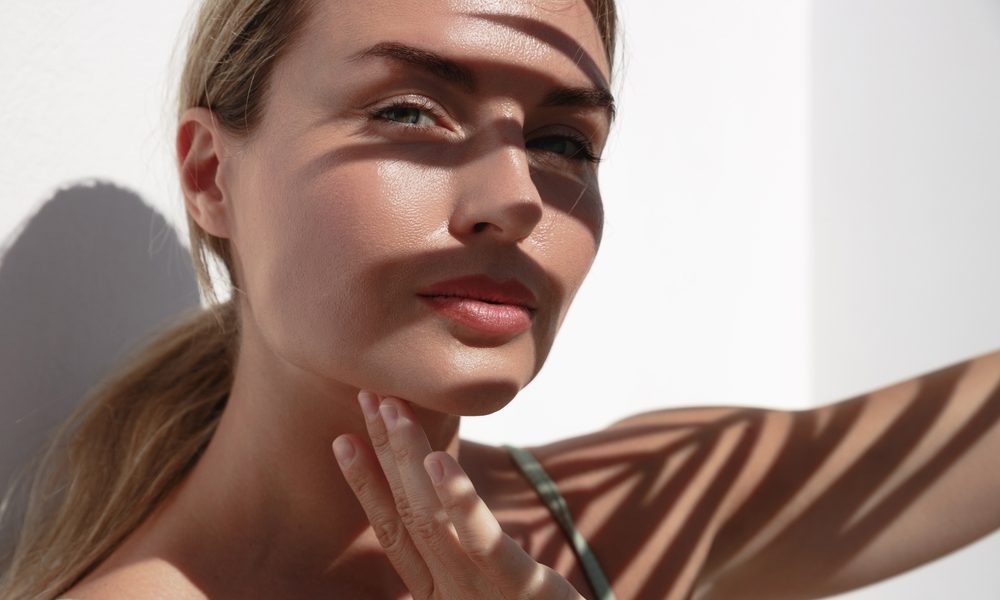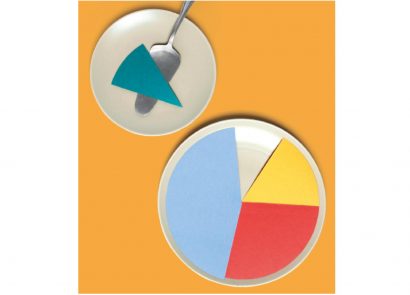Rosacea is a chronic skin condition and often shows up without warning, especially in women between ages 30 and 50. Symptoms include facial redness, swollen, red bumps that sometimes contain pus and visible blood vessels on your nose and cheeks. If you’ve experienced it, you’ll know that treating it is not always as straightforward as simply buying rosacea cream.
The skin condition is more common in women and in those who have family members with rosacea. If you have fair skin and blush or flush easily, you are probably at a greater risk of developing it. The redness is also an indicator of collagen loss, which leads to thin skin density.
Rosacea is an auto-inflammatory skin condition that has lots of different symptoms and different levels of diagnosis. It may require treatment by a doctor or dermatologist, so it is always best to seek professional advice.
But the good news is that there are lots of things you can do to ease symptoms, reduce flare-ups and maintain healthy, glowing skin.
What is the main trigger for rosacea?
A flare-up of rosacea can be triggered by alcohol consumption, spicy food, hot drinks, stress, extreme temperatures, certain skincare products and medications, and even strenuous exercise. So, it makes sense to try to remove these stimulators from your lifestyle.
The advice is to wear SPF daily – as we all should – and avoid being in the sun for extended periods of time when UV rays are at their strongest (11am – 3pm).
Avoid certain foods, like caffeine, alcohol, dairy and spicy foods, which tend to be common culprits. Although, this will vary from person to person. Also, consuming too much sugar can also cause flare-ups, so try to curb your sweet tooth.
“These triggers aren’t the cause, but they may worsen symptoms or cause a flare-up in someone who has the condition,” says cosmetic doctor Dr Rekha Tailor.
“If you think you may have rosacea, I recommend keeping a diary focused on your diet and lifestyle, so you can spot flare-ups in the first instance. While it isn’t curable, it is treatable.”
What not to do when you have rosacea
Heightened stress and anxiety can increase inflammation, which can contribute to rosacea flare-ups. So, take steps to manage your stress, such as gentle exercise, mindfulness and meditation.
“Stress can cause the skin to become dry, flaky, sallow, red and generally irritated. When the skin barrier has been compromised, skin can become more sensitive and inflamed,” says Dr Maryam Zamani, oculoplastic surgeon and leading facial aesthetics doctor.
“Be cautious with topical skin care products and treatments. Improve the skin barrier, stop using any perfumed skincare products, avoid skincare with strong actives (like retinols or acids) and keep your regimen simple and consistent.”
A less is more approach is the best course of action. “A good skin barrier is the secret to really good skin,” adds Dr Amelie Seghers, Consultant Dermatologist at The Clinic by Dr Maryam Zamani.
“However, repeated stresses to the skin lead to a damaged skin barrier (a common modern-day skin problem). If possible, remove all the stresses that are present. Often the main culprits are active skincare ingredients such as retinol, AHAs and most other acids (one of the exceptions is hyaluronic acid). Avoid frequent facials, exfoliation, constant touching of the skin and friction from masks, helmets, and hair on the face, like a fringe.”
Similarly, try not to slip into bad beauty habits, like not cleaning your make-up brushes regularly. Dirt, bacteria and other nasties can build up between the bristles and disrupt the skin’s microbiome. When your skin has a microbiome imbalance, you’re more likely to suffer from conditions such as rosacea, eczema and acne. The same goes for flannels and pillowcases, so make sure you wash those regularly, too.
Skincare advice for rosacea and redness
To support your skin, the expert advice is to “use gentle skincare products suitable for sensitive skin. Try products that are rich in hydration and may include ingredients such as glycerol, squalene, hyaluronic acid or ceramides,” Dr Zamani explains.
It is best to use specially formulated products for rosacea. Surprisingly: “5% of people with rosacea are undiagnosed,” reveals clinical facialist specialising in the treatment of reactive skin, Kate Kerr.
“Many believe that their skin is sensitive, when in fact rosacea is the root cause of the inflammatory signs which include acne, enlarged pores and hyperpigmentation”.
While we don’t know the exact reason for the condition, Kate believes that one possible culprit is an increase in sebaceous gland activity. “These can become hyperactive (due to factors such as hormones, stress or lack of sleep) which encourages the skin to overproduce oil”, she says. “This then has an inflammatory effect on the skin.”
Stick to a simple morning and evening routine of cleansing and hydrating your complexion.
Kate recommends regular facial massage, too.
“Lymphatic drainage massage is fabulous for draining away toxins to depuff, detoxify and brighten the skin,” she explains. “It is particularly beneficial for those prone to acne or rosacea or who need general brightening.”
“It is important that lymphatic drainage massage is light, as lymph vessels are very fine and shallow and can be damaged easily. If you have any concerns, check with your GP before performing lymphatic drainage massage.”
Boost your complexion with facial massage
Here’s expert facialist Kate’s step-by-step guide to doing lymphatic drainage massage on your face:
“At the front of the neck, in the dip above your collarbone, apply gentle pressure to your lymph nodes with your three middle fingers. Move in slow small circles about 50 times.
Repeat the same slow circles behind the earlobe and then in front of your ears using the three middle fingers 25 times.
Using a gentle press-pulse movement, begin behind the ears gently draining the lymph fluid down the neck towards the lymph nodes above the collarbone. Repeat 3 times.
Now that you have stimulated the lymph nodes and cleared the backlog, it is time to encourage the lymph drainage of the face.
Beginning at the top of your forehead, using all four fingers of both hands, press-pulse from the middle of the forehead outwards and down towards the lymph nodes in front of the ears. Work from the top of the forehead in approximately four lines until you reach the brow bone.
Repeat the same press-pulse action from under the eyes out towards the ears. Move in symmetrical lines until you reach the jawline.
Repeat this whole face draining process, from top of the forehead to jawline three times.
Having drained the lymph fluid towards the lymph nodes, finish by emptying the lymph nodes and encouraging the fluid down and back into the body for detoxification. Repeat as for steps 1-3 but begin in front of the ears, behind the ears, drain down the neck to finish with the pressure point above the collar bone. Repeat 3 times.
Finish with a hydrating serum, soothing eye cream and a slick nourishing lip balm.”
Top rosacea cream
While it’s important not to stress your skin with too many lotions and potions, a few well chosen products can make a real difference. If you’re looking for rosacea cream and products specifically targeted to treat redness, here are some of our top picks.
Rosalique 3 in 1 Anti-Redness Miracle Formula SPF50 (£29.99)
Developed for hypersensitive and redness-prone skin conditions, this contains micro-encapsulated pigments with a green outer layer to neutralise redness. The formula also boasts active ingredients, like shea butter and urea gently to help calm and soothe irritated areas. While UV filters protect skin from UVA and UVB rays that aggravate red skin and long-term sun damage. Apply a small amount in morning to clean skin, either in place of or after moisturiser using fingers or a brush. Blend until it adapts to your complexion, coverage is buildable so more can be applied if necessary.
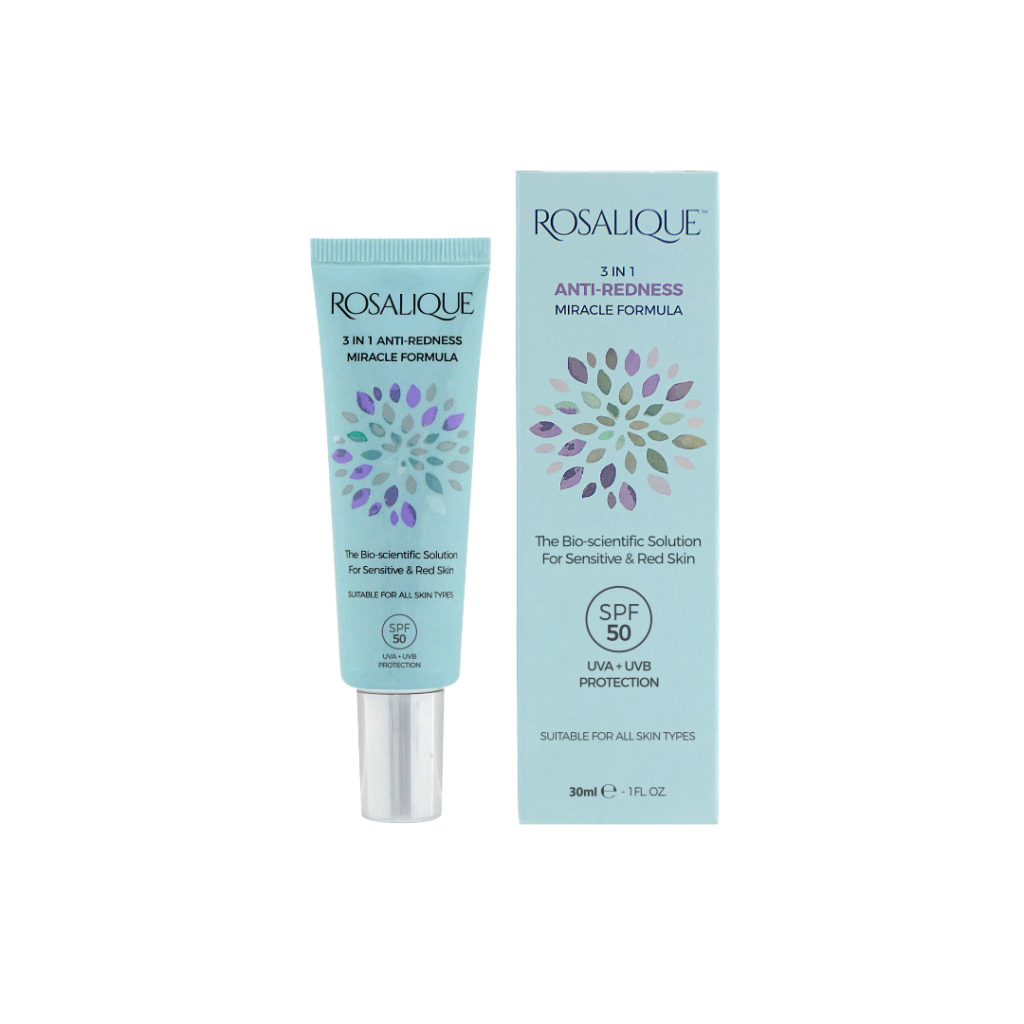
This facial serum contains extracts of Mexican agave to help combat rosacea. PreBIULIN AGA agave extract is a patented prebiotic that is repellent to a particular skin bacteria associated with triggering rosacea flare-ups, called bacillus oleronius. Skin prone to rosacea has a volatile reaction to an increase of bacillus oleronius bacteria that results in the classic cyclical symptoms of redness, inflammation and hyper-sensitivity.
Aside from reducing bacillus oleronius, PreBIULIN AGA also helps replenish the skin’s microbiome, which is typically damaged from repeated rosacea flares and leads to dryness and tightness of the skin, a common symptom of rosacea.
It also contains a second extract of pure blue agave, which also has prebiotic properties while also delivering hydration and an anti-inflammatory action.
Plus it’s got 100% pure plant-based squalene for extra moisturisation.
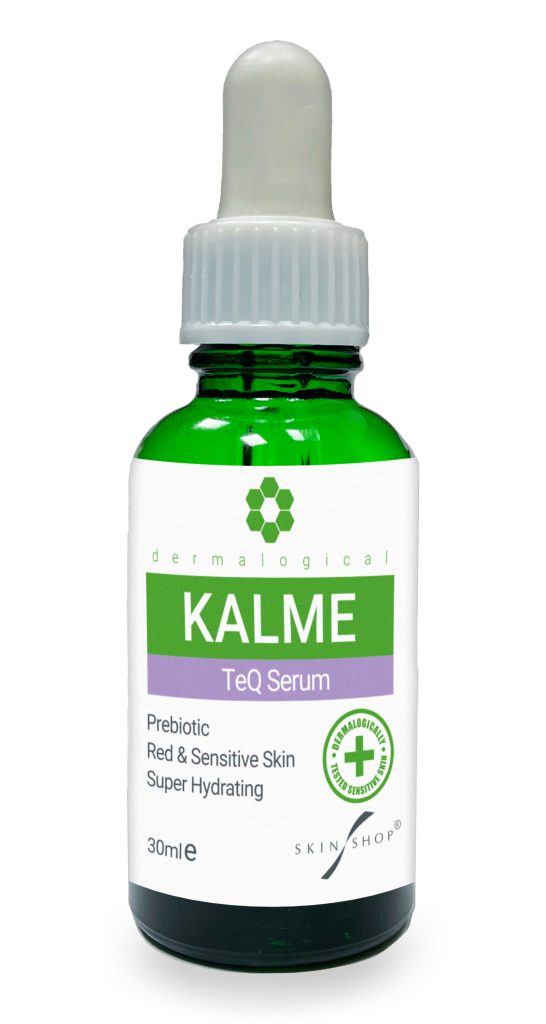
The INKEY List Redness Relief Solution (£12.80)
A fast-absorbing, non-pilling serum is formulated with 10% azelaic acid. This anti-redness serum gives the skin a more even complexion and calms irritation. Created in partnership with dermatologists, this formula contains micro-fine green colour particles to help mask redness and allantoin 0.3% which helps to soothe the skin. It can be easily layered with other products and leaves no white-cast or ‘crunchy’ layer when paired with other products. Azelaic acid is an active ingredient, but one that’s known to help blemish and rosacea prone skin. It is usually tolerated well but it might be best to use sparingly at first to see how it suits your complexion.

Scent Free 24 Hour Cream (£25.50)
A hero product for sensitive and rosacea prone skin, this unscented organic moisturiser cares naturally for your skin all day long. Dermatologically tested, its gentle touch combines soothing, organic plant oils with powerful natural anti-ageing actives. With its balance of protective prebiotics and moisture-binding cacay oil, this everyday essential can be trusted when your skin is in state of stress. Completely scent free, it absorbs with ease to gently soothe away redness. Infused with antioxidant-rich green tea, hydrating jojoba oil and skin loving avocado, this moisturiser delivers essential nutrients to the skin, promoting a healthy and radiant complexion. Its non-greasy formula absorbs effortlessly.
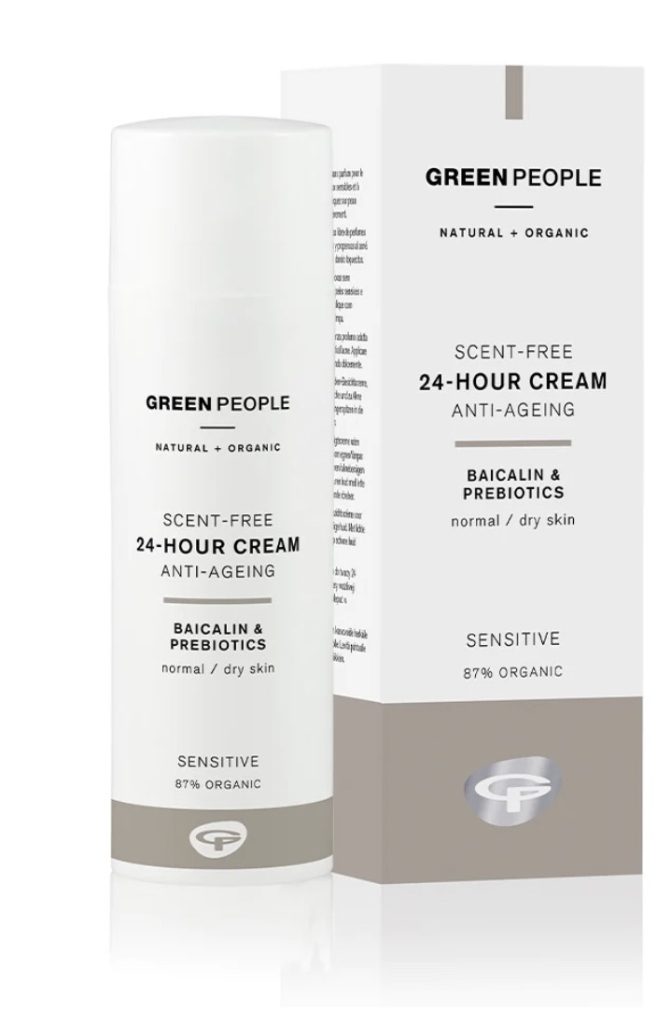
Does a miracle rosacea cream exist?
While there is no miracle cure-all to magic away the skin condition, hopefully with the help of the above advice you will see flare-ups occur less often. And when they do, they’ll be milder.









